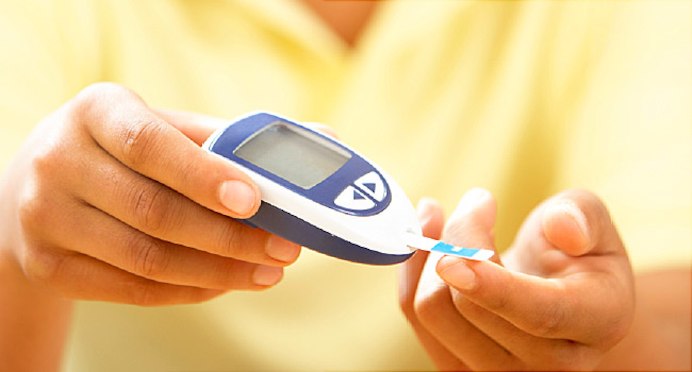If you have diabetes, you should try to keep your blood sugar level as close as possible to that of someone who doesn’t have diabetes. This may not be possible or right for everyone. Check with your doctor about what the right range of blood sugar is for you.
You will get plenty of help in learning how to do this from your health care team, which is made up of your doctor, nurses, and dietitian.
Bring a family member or friend with you when you see your doctor. Ask lots of questions. Before you leave, be sure you understand everything you need to know about taking care of your diabetes.
Eat Healthy Food
The foods on your diabetes eating plan are the same ones that are good for everyone. Try to stick to things that are low in fat, salt, and sugar and high in fiber, like beans, fruits, vegetables, and grains.
Having diabetes shouldn’t keep you from enjoying a bunch of different foods.
Try to fill half your plate with non-starchy vegetables such as: Asparagus, Broccoli, Carrots, Cucumber, Salad greens, Squash and Tomato.
Also, make sure to get some of these: Beans, Berries, Citrus fruits, Lean meat. Low-fat or non-fat dairy products like Nuts, Poultry or fish, Sweet potatoes. You can also get protein from vegetarian things like tofu.
Stick to whole-grain foods. If you eat cereals, check the ingredients and make sure whole grain is first on the list.
Examples of whole grains include: Brown rice, Bulgur (cracked wheat), Millet, Popcorn, Quinoa, Sorghum, Whole oats oatmeal and Whole wheat.
Exercise
Regular physical activity helps you feel better. It also improves your sensitivity to insulin, which means it works better in your body. Because it does, your blood sugar levels can become more stable.
Exercise can also help ease stress. If you aren’t active now, start slow. Then build up how much exercise you get over time. Shoot for 4 to 7 periods of activity each week. Try to make each period last for at least 30 minutes. And you don’t have to work out at the gym to be active. Take the stairs instead of an elevator, or park at the far end of the lot. Both add exercise to your daily routine.
Have a realistic goal and make a plan. What exercises will you do, and when will you do them? For example, you might plan to walk 30 minutes most days on your lunch break.
Change your activities often enough so you don’t get bored. You can do aerobic activities like walking or jogging. And resistance exercises like working out with weights offer another option. Whatever you do, don’t forget to stretch before and after each workout session.
It’s important to realize that exercise lowers your blood sugar. Talk to your doctor about whether you need to adjust your meds or insulin dose to keep your levels high enough.
If You Use Insulin
Give yourself an insulin shot. Eat about the same amount of food each day at about the same time. Don’t skip meals, especially if you’ve already given yourself an insulin shot. Your blood sugar may go too low.
If You Don’t Use Insulin, Don’t skip meals, especially if you take diabetes pills. Your blood sugar may go too low. Skipping a meal can make you eat too much at the next meal. It may be better to eat several small meals each day instead of one or two big ones.
PNN
